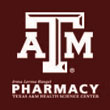Top 10 Pharmacy Schools in the Southwest

In preparing our inaugural list of the top pharmacy schools in the Southwest, we considered dozens of schools in the US that offered pharmacy programs. Our goal with this list is to give students access to information so they can make informed decisions about the schools they choose to attend and the programs they pursue. Our motivation for publishing these rankings is simple. We frequently receive emails from young people -many of whom are already working as pharmacy technicians- asking for advice as to which pharmacy schools they should consider. Our hope is that this list is a starting point for aspiring pharmacists to discover the schools that are the best fit for them.
The criteria we used in making this list consists, in no particular order, of the following: academic reputation, admission selectivity, depth and breadth of the program and faculty, size and scope of the pharm school class, and value as it relates to tuition. All data used on our rankings was obtained from publicly available sources.
Like any list, ours is not perfect and is open for debate. There is no single opinion that trumps all when it comes to which school is the “best”. Ultimately every student has different needs regarding the type and academic rigor of a program, campus culture, as well as cost, lifestyle, and career focus. Hence the notion that we consider these lists a starting point for aspiring pharmacists in the search for the appropriate program that meets their needs.
 1. University of Texas at Austin, College of Pharmacy, Austin, Texas
1. University of Texas at Austin, College of Pharmacy, Austin, Texas
The University of Texas at Austin (UT Austin) College of Pharmacy opened its doors to just three students and 11 professors in 1893. At the time, the College was located at the ground level of the Old Red Main Building at the University of Texas Medical Branch at Galveston. Today, the College of Pharmacy operates out of a two-building pharmacy complex at the University of Texas at Austin, and it ranks among the Top Ten Pharmacy Schools in the Nation by U.S. News & World Report.
Home to around 127 students, the UT Austin College of Pharmacy offers the Pharm.D. and M.S. and a Ph.D. degrees in Pharmaceutical Sciences. Specializations include Pharmacology and Toxicology, Medicinal Chemistry, Pharmaceutics, Pharmacotherapy, Health Outcomes and Pharmacy Practice, and Interdisciplinary Studies. The College also offers a new Interdisciplinary Ph.D. Degree in Translational Sciences.
Tuition for Pharm.D. students is based on a flat rate tuition plan. Resident tuition for Pharm.D. students is $7,915/semester and $20,460/semester for non-residents and international students. Resident tuition for graduate programs is $5,451 for 12 credit hours and $10,472 for non-residents for 12 credit hours.
About University of Texas at Austin: Established in 1883,the University of Texas at Austin isthe largest school in the University of Texas system and one of the largest public universities in the nation. Listed as a Top 25 School by the Times Higher Education World University Rankings for 2012-2013, the school is home to more than 50,000 students and it offers 400 academic programs throughout 18 colleges and schools.
 2. University of Utah College of Pharmacy, Salt Lake City, Utah
2. University of Utah College of Pharmacy, Salt Lake City, Utah
Established in 1946, the University of Utah College of Pharmacy ranks among the Top Ten Colleges of Pharmacy in the Nation by U.S. News & World Report (2013). The National Institutes of Health (NIH) also lists the College among the Top Ten for Research Productivity. Part of the University of Utah Health Sciences Center, the College of Pharmacy offers the Pharm.D. and a variety of Ph.D. degree programs.
Ph.D. program offerings include Medicinal Chemistry, Pharmaceutics & Pharmaceutical Chemistry, and Pharmacology & Toxicology. Students may also pursue the Pharm.D. and Ph.D. simultaneously (Pharm.D./Ph.D.) in Medicinal Chemistry, Pharmaceutics & Pharmaceutical Chemistry, Pharmacology & Toxicology, and Pharmacotherapy.
Resident tuition for the University of Utah College of Pharmacy is $11,046.19 for 12 credit hours. Tuition for non-residents is $19,325.92 for 12 credit hours.
About University of Utah: Founded in 1850, the University of Utah is the state’s oldest institution of higher education. Home to more than 32,000 students, the school is also the largest university in the state. The University of Utah sits on a 1,535-acre campus, and it houses more than a dozen colleges and schools. Program offerings include 100+ undergraduate programs and more than 90 graduate degree programs.
 3. University of Arizona College of Pharmacy, Tucson, Arizona
3. University of Arizona College of Pharmacy, Tucson, Arizona
The University of Arizona College of Pharmacy was founded in 1947. The College
ranks among the Top 20 Colleges of Pharmacy “in terms of external funding for research, including funding from the National Institutes of Health.” Home to around 471 students, the College of Pharmacy at the University of Arizona offers a Pre-pharmacy program, a Dual Pharm.D./Ph.D., and a variety of Ph.D. Degree programs.
Ph.D. offerings include Drug Discovery and Development, Pharmaceutics & Pharmacokinetics, and Pharmacology & Toxicology. The College also offers a M.S. and Ph.D. in Pharmaceutical Economics, Policy, and Outcomes.
Resident tuition and fees for the College of Pharmacy are $2,471.85 for 3 units, $4,913.85 for 6 units, and $5,762.85 for 7+ units. Non-resident tuition and fees are $4,616.85 for 3 units, $9,203.85 for 6 units, and $13,698.85 for 9+ units.
About University of Arizona: The University of Arizona was established in 1885 with just 40 acres of land, 32 students, and six teachers. The state’s original land-grant university now sits on a 387-acre campus and it is home to 38,057 students. Ranked among the Top 20 Public Universities by the National Science Foundation, the University of Arizona offers more than 300 degree programs throughout 31 colleges and schools.
 4. University of Colorado Skaggs School of Pharmacy and Pharmaceutical Sciences, Aurora, Colorado
4. University of Colorado Skaggs School of Pharmacy and Pharmaceutical Sciences, Aurora, Colorado
The University of Colorado Skaggs School of Pharmacy and Pharmaceutical Sciences is located at the University of Colorado Anschutz Medical Campus in Aurora. Established in 1911, the Skaggs School opened its doors with just two students and one faculty member. Today, the School is home to 600 students and 55 faculty members.
The Skaggs School of Pharmacy and Pharmaceutical Sciences offers the Pharm.D., a nontraditional Pharm.D. (North American-Trained Pharm.D. Program (iPharmD™), and Ph.D. degrees in Pharmaceutical Sciences, Toxicology, and Pharmaceutical Outcomes Research.
Tuition for the 2013-14 academic year is $24,614 for residents and $38,891 for non-residents.
About University of Colorado: The University of Colorado is a public institution that houses more than 60,000 students across four campuses. Founded in 1876, the University has campuses in Boulder (main campus), Colorado Springs, Denver, and Aurora, Colorado. The main campus sits on 700 acres and it offers more than 150 programs throughout nine colleges and schools.
 5. Texas A&M University Health Science Center-Irma Lerma Rangel College of Pharmacy, Kingsville, Texas
5. Texas A&M University Health Science Center-Irma Lerma Rangel College of Pharmacy, Kingsville, Texas
The Texas A&M Health Science Center Irma Lerma Rangel College of Pharmacy, on the Texas A&M University-Kingsville campus, was established in 2006 in response to the shortage of pharmacists in the border region of Texas. It is ranked in the Top 50 for pharmacy programs in the country within a record time, as per the recent U.S. News and World Report rankings. The College operates from a three-story, 63,000-square-foot facility and it consists of two departments—the Department of Pharmacy Practice and the Department of Pharmaceutical Sciences. Offerings include the doctorate in pharmacy and a Dual Pharm.D./MBA program.
The professional student pharmacists at the Texas A&M Rangel College of Pharmacy attain and practice their skills with the largest preceptor network in the state of Texas, 915 members strong.
Today, 44 percent of the college’s graduates have returned to South Texas to help underserved populations. The college’s leadership strives to entrench a culture of excellence, education, research, practice and patient care to each professional student enrolled.
Tuition for the Professional Years 1-3 (10 months/per year) is $7,632 for Texas residents, and $45,540 for non-residents. Tuition for year 4 (11 months) is $8,056 for Texas residents, and $48,070 for non-residents.
 6. Texas Tech University Health Sciences Center School of Pharmacy, Amarillo, Texas
6. Texas Tech University Health Sciences Center School of Pharmacy, Amarillo, Texas
Established in 1969, the School of Pharmacy at Texas Tech University is part of the University Health Sciences Center. Ranked in the Top 25 for Research Funding among U.S. pharmaceutical research programs, the School of Pharmacy is home to three departments including the Department of Pharmaceutical Sciences, the Department of Biomedical Sciences, and the Department of Immunotherapeutics and Biotechnology.
The Texas Tech School of Pharmacy offers the Pharm.D., and a Graduate program in Pharmaceutical Sciences. Resident tuition is $8,716.68 for the 2012-2013 school year and $17,140.68 for non-residents.
About Texas Tech University: Texas Tech University was established in 1923 as Texas Technological College. In 1925, the College welcomed its first class of 914 students. Today, Texas Tech University is home to 32,611 students, and it is the “largest comprehensive higher education institution in the western two-thirds of the State of Texas.” The school, which offers more than 200 academic programs across 12+ colleges and schools, is the only campus in the state that houses a major university, medical school, and law school.
 7. University of Oklahoma College of Pharmacy, Oklahoma City-Tulsa, Oklahoma
7. University of Oklahoma College of Pharmacy, Oklahoma City-Tulsa, Oklahoma
The University of Oklahoma College of Pharmacy was established in 1893. It offers several degree programs for aspiring pharmacists including the Pharm.D., and M.S. and Ph.D. degrees with five areas of specialization. Specializations include Pharmaceutics, Pharmacy Administration, Medicinal Chemistry, Nuclear Pharmacy, and Pharmacology and Toxicology. The College also offers a Pharm.D./M.S. Dual Degree program.
Tuition for the University of Oklahoma College of Pharmacy is $14,013 for Professional Years 1-3 (annual/residents) and $18,262.25 for Year 4. Non-resident tuition is $31,441 per year for Professional Years 1-3 and $40,555.51 for Year 4.
About University of Oklahoma: The University of Oklahoma was established in 1890. The school, which welcomed its first class of 100 students in 1895, is now home to more than 30,000 students enrolled in more than 420 majors and 26 certificate programs. Along with a total of 21 colleges, the University of Oklahoma has three campuses in Norman, Oklahoma City, and Tulsa, Oklahoma.
 8. University of Houston College of Pharmacy, Houston, Texas
8. University of Houston College of Pharmacy, Houston, Texas
Established in 1946, the University of Houston College of Pharmacy received the Best Practices Award in 2010. The College, which consists of two departments including Clinical Sciences & Administration, and Pharmacological & Pharmaceutical Sciences, is accredited by the Accreditation Council for Pharmacy Education and it is a member of the American Association of Colleges of Pharmacy.
Program offerings include the Pharm.D., M.S. and Ph.D. degrees in Pharmacy Administration, a Ph.D. in Pharmacology or Pharmaceutics, a combined Pharm.D./Ph.D., and a combined Pharm.D./M.S.
Resident tuition for University of Houston College of Pharmacy students is $423 per credit hour (M.S./Ph.D.). Non-resident tuition is $777 per credit hour. Resident tuition for Pharm.D. students is $552 per credit hour and $906 per credit hour for non-residents.
About University of Houston: The University of Houston was established in 1927. This public research and teaching institution sits on a 667-acre campus, and it has a student population of nearly 40,000. The University of Houston offers nearly 300 undergraduate and graduate programs throughout 12 academic colleges and an interdisciplinary Honors College.
 9. University of New Mexico College of Pharmacy, Albuquerque, New Mexico
9. University of New Mexico College of Pharmacy, Albuquerque, New Mexico
Established in 1945, the University of New Mexico College of Pharmacy offers the only Pharm.D. in the State of New Mexico. The College also offers a M.S. in Pharmaceutical Sciences with four research concentrations including Toxicology, Radiopharmacy, Pharmacoeconomics, and Pharmaceutical Policy and Outcomes.
A Ph.D. in Pharmaceutical Sciences with two research concentrations is also on the menu, as well as a Ph.D. in Biomedical Sciences with a research concentration in Toxicology & Pharmaceutical Sciences. Research concentrations for the Ph.D. in Pharmaceutical Sciences include Pharmacoeconomics andPharmaceutical Policy & Outcomes.
Resident tuition for the University of New Mexico College of Pharmacy is $465 per credit hour for 1 to 11 hours and $5,580 for 11+ credit hours. Tuition for non-residents is $1,341.25 per credit for 1 to 11 hours and $16,099.44 for 11+ credit hours.
About University of New Mexico: Established in 1889, the University of New Mexico (UNM) is the state’s flagship university. Home to 27,278 students at its main campus in Albuquerque, and 7,933 students at its branch campuses and education centers, the 800-acre UNM campus houses 12 colleges and schools. Students have access to 94 Bachelor’s, 71 Master’s, and 37 Doctoral degree programs. UNM also offers a variety of certificate programs.
 10. University of the Incarnate Word Feik School of Pharmacy, San Antonio, Texas
10. University of the Incarnate Word Feik School of Pharmacy, San Antonio, Texas
The University of the Incarnate Word Feik School of Pharmacy was established in 2004. Located near the heart of downtown San Antonio, the School offers an average class size of 100 students. Program offerings include a Pre-pharmacy program and the Pharm.D.
Tuition for the Feik School of Pharmacy is $32,500 per year or $895 per credit hour, and $4,890 per clinical rotation.
About University of the Incarnate Word: The University of the Incarnate Word (UIW) is the largest Catholic university in Texas and the fourth-largest private university in the state. It sits on a 154-acre campus and offers 80 undergraduate and graduate fields of study across nine colleges and schools. Established in 1881 by the Sisters of Charity of the Incarnate Word, UIW was originally named “Incarnate Word College.” What began as a women's college, now admits more than 9,188 male and female students from all backgrounds, including over 70 countries.

- Facebook Like
- Google Plus One
- 60405 reads


